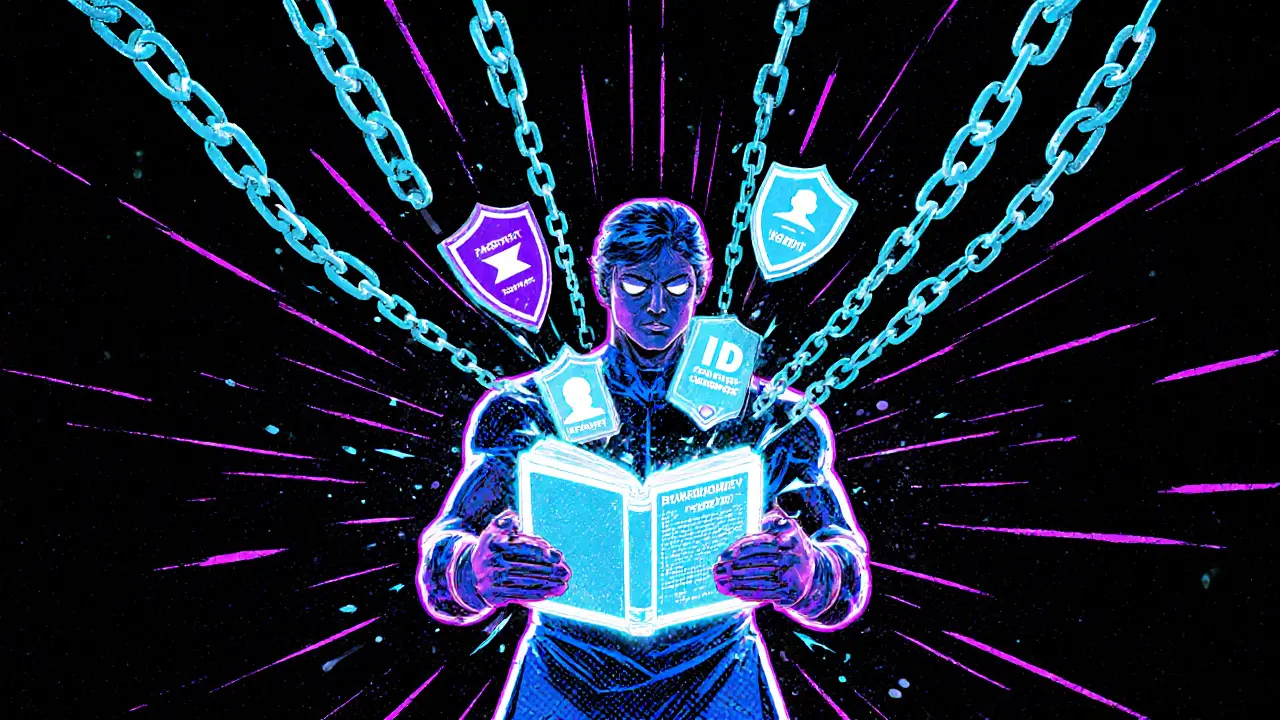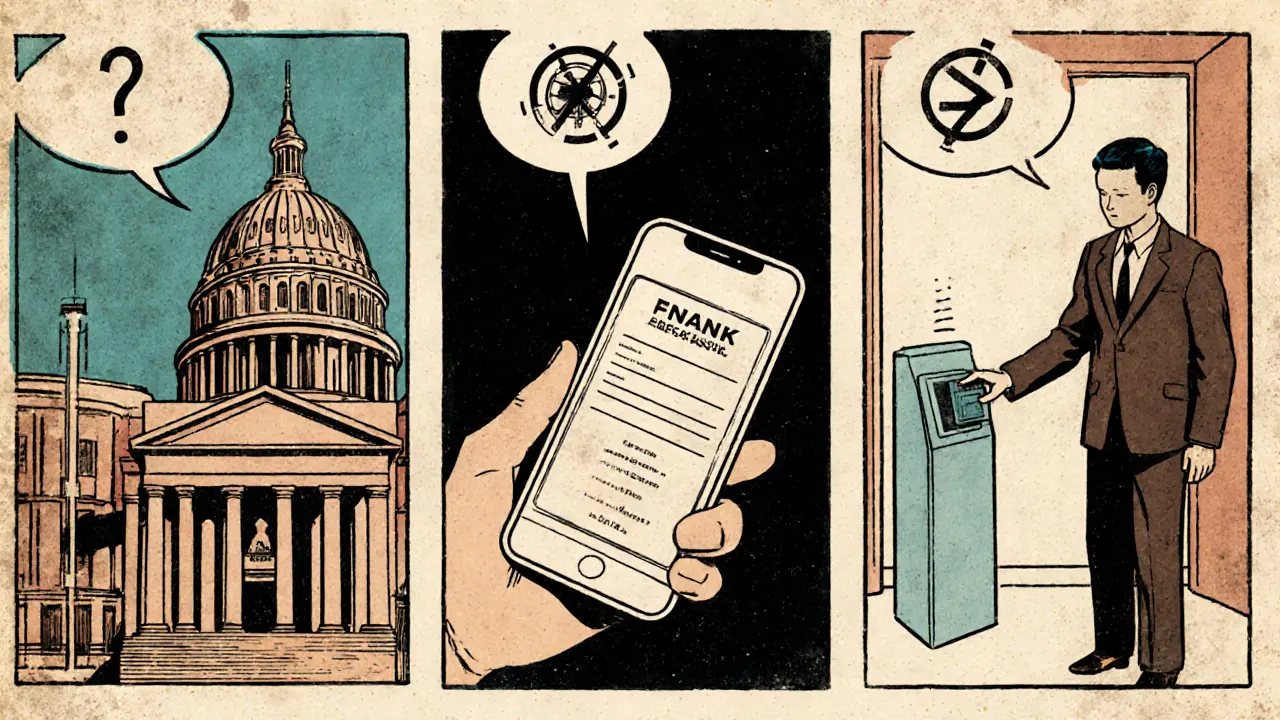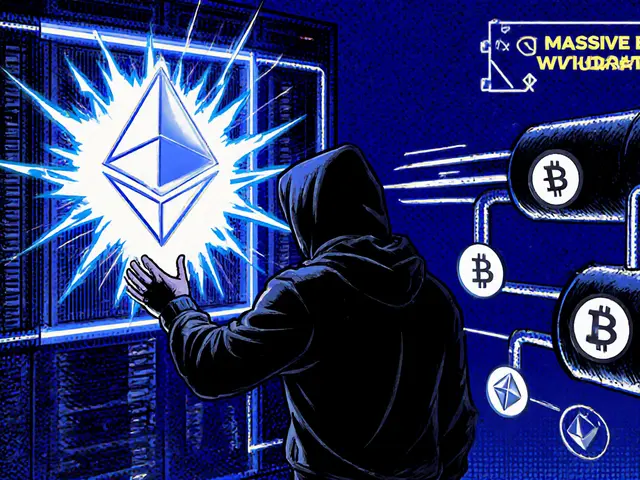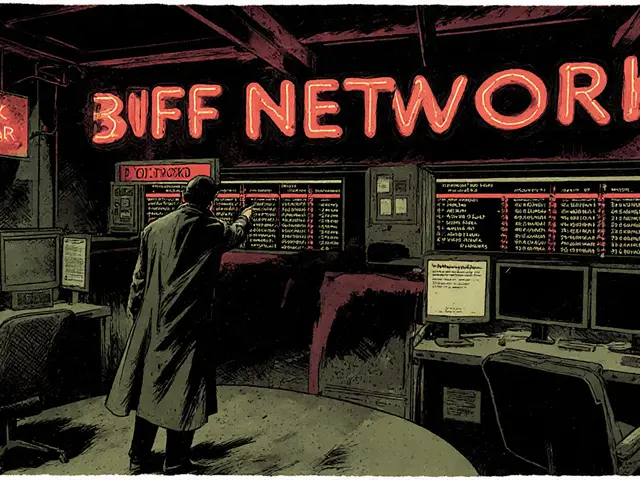
Decentralized Identity Verification Simulator
Verification Setup
Verification Process
Select an option above and click "Run Verification" to see the process.
What's Being Shared
No verification has been initiated yet.
Security Benefits
Every time you sign up for a new website, app, or service, you hand over a piece of yourself-your name, email, phone number, maybe even your ID. That data gets stored somewhere, often in a database you can’t see, owned by someone you don’t trust. And if that company gets hacked? Your identity goes with it. Centralized systems have made digital life convenient, but they’ve also made us vulnerable. Decentralized identity management flips that script. It’s not about better passwords or two-factor authentication. It’s about putting decentralized identity back in your hands.
What Exactly Is Decentralized Identity?
Decentralized identity, or DCI, means you own your digital identity-not a bank, not a social media giant, not the government. Instead of relying on a single company to verify who you are, you use cryptographically secured digital tools that let you prove things about yourself without giving away everything. Think of it like showing your driver’s license to prove you’re over 21, but only showing the birth date, not your home address, photo, or license number. That’s the power of this system. At its core, decentralized identity uses two key building blocks: Decentralized Identifiers (DIDs) and Verifiable Credentials (VCs). DIDs are unique, blockchain-based strings-like a digital fingerprint-that point to your identity. They don’t contain your name or email. They’re just a key that leads to a public document with encryption details. Verifiable Credentials are digital versions of your diplomas, passports, or employee badges. They’re issued by trusted organizations-like universities or governments-and signed with digital signatures so no one can fake them. You store both DIDs and VCs in a digital wallet, just like you’d store crypto. But instead of holding Bitcoin, you hold proof of who you are. When you need to log in to a service, you don’t send your password. You send a cryptographic proof that you hold a valid credential. The verifier checks it against the blockchain, confirms it’s real, and lets you in-all without ever seeing your real name, address, or any other private data.How It Works: Issuers, Holders, and Verifiers
Think of decentralized identity as a three-person game: issuers, holders, and verifiers.- Issuers are the trusted parties that give you credentials. A university issues a degree credential. A government issues a birth certificate. A company issues an employee badge.
- Holders are you. You keep those credentials in your digital wallet. You decide when and where to use them.
- Verifiers are the websites, apps, or services that need proof. A bank checking your age. A job portal verifying your degree. A hotel checking your ID.
Self-Sovereign Identity: The Ultimate Goal
Decentralized identity is the umbrella. Self-Sovereign Identity (SSI) is the ideal version of it. SSI means you have total control. No one can freeze your account. No one can sell your data. No one can delete your credentials unless you let them. You’re not just a user-you’re the owner. This isn’t theoretical. In Estonia, citizens use blockchain-based digital IDs to access healthcare, vote, and sign contracts. In Canada, the government has tested a pilot where people use SSI to apply for benefits without handing over reams of paperwork. In the U.S., companies like Microsoft and IBM are building SSI tools for enterprise use. The real win? You can use the same credential across dozens of services. No more creating 17 passwords. No more filling out the same form five times. You just pull up your verified credential and share what’s needed.
Why It’s Better Than Centralized Systems
Centralized identity systems are broken. They’re slow, insecure, and invasive. You sign up for a new app? They ask for your email, phone, date of birth, maybe your SSN. That data gets stored in their database. If they get breached-like Equifax, LinkedIn, or Adobe-you’re exposed. And you have zero control over what happens to your data after that. Decentralized identity fixes this:- No central database to hack. Your data isn’t stored in one place. It’s scattered across your wallet and encrypted. Even if a verifier gets compromised, attackers only see a hash-not your real info.
- Minimal data sharing. You don’t need to give your full name to prove you’re over 18. You just prove the age. That’s called selective disclosure.
- No account lockouts. If you lose your password, you’re locked out. If you lose your wallet? You can recover it with a backup phrase-just like crypto.
- Interoperable. Because DIDs follow W3C standards, your credential works across platforms. A credential issued by a university in Germany can be used to verify your identity on a U.S.-based job site.
The Challenges: It’s Not Perfect Yet
This isn’t magic. There are real hurdles. First, user experience. Most people don’t understand public keys, seed phrases, or zero-knowledge proofs. If you lose your wallet backup, you lose your identity. There’s no “forgot password?” button. Recovery is possible-but only if you’ve saved your 12-word phrase. Second, adoption. For decentralized identity to work, verifiers need to support it. Right now, only a few companies and governments are on board. Until banks, airlines, and online retailers start accepting DIDs, it’s a niche tool. Third, standards are still evolving. There are dozens of DID methods-some built on Ethereum, others on Hyperledger, others on independent blockchains. While the W3C is pushing for universal standards, fragmentation still exists. A credential from one system might not work on another unless both use compatible methods. And then there’s regulation. GDPR and other privacy laws favor decentralized models because they give users control. But in some countries, governments still want to hold the keys. That tension will shape how this plays out over the next five years.
What’s Next for Decentralized Identity?
The momentum is building. In 2025, the European Union is rolling out a digital wallet that lets citizens store and share official credentials using decentralized identity. Apple and Google are exploring ways to integrate DIDs into their operating systems. Startups are building wallet apps with simple interfaces-no command lines, no crypto jargon. The next big leap will be when your phone’s biometric login-Face ID or fingerprint-also unlocks your decentralized identity. Imagine walking into a bank, looking at the camera, and instantly proving you’re you-no ID card, no password, no form. That’s not sci-fi. It’s already being tested in pilot programs in New Zealand, Singapore, and Sweden. The goal isn’t to replace all identity systems overnight. It’s to give people a better option. One that’s secure, private, and under their control.How to Get Started
You don’t need to be a developer to try this. Here’s how to dip your toes in:- Download a wallet that supports DIDs: Try Spruce ID, Microsoft ION, or uPort (all available on iOS and Android).
- Generate your DID. The app will give you a 12-word recovery phrase. Write it down. Keep it safe. This is your identity backup.
- Look for services offering verifiable credentials. Some universities issue digital diplomas. Some cities offer digital residency proofs.
- When you’re asked to verify your identity online, see if the option to “Connect with Wallet” appears. If it does, try it.
Final Thought: Your Identity Belongs to You
For decades, we’ve accepted that our identity is a product-sold, tracked, and monetized by companies. Decentralized identity says: no. You are not a data point. You are the owner. And with the right tools, you can take it back. It’s not about technology alone. It’s about power. Who controls your data? Right now, it’s corporations. In the future, it could be you.What’s the difference between decentralized identity and blockchain?
Blockchain is the underlying technology that makes decentralized identity possible. Think of blockchain as the secure, public ledger that stores your DID and verifies credentials. Decentralized identity is the system that uses that ledger to let you control your personal data. You can have blockchain without decentralized identity (like Bitcoin), but you can’t have decentralized identity without some form of distributed ledger.
Can I lose my decentralized identity?
Yes-if you lose your wallet and your recovery phrase. Unlike traditional accounts where a company can reset your password, decentralized identity gives you full control-and full responsibility. If you don’t back up your 12-word phrase, you lose access permanently. That’s why it’s critical to store your recovery phrase securely, offline, like you would a bank vault key.
Are verifiable credentials legally valid?
In many places, yes. The European Union, Canada, Japan, and parts of the U.S. already recognize digital credentials issued under W3C standards as legally equivalent to paper documents. For example, a digital degree from a university using verifiable credentials is accepted by employers and immigration authorities. As long as the issuer is trusted and the credential is cryptographically signed, it holds legal weight.
Do I need cryptocurrency to use decentralized identity?
No. You don’t need to buy, trade, or hold any crypto. While some decentralized identity systems run on blockchains that use cryptocurrency (like Ethereum), most user-facing wallets don’t require you to interact with tokens. You’re only using the blockchain as a secure registry-like a public record book. Your wallet might even work entirely off-chain, with only the DID stored on the ledger.
Can governments spy on me with decentralized identity?
Not in the way they can with centralized systems. Since you control your credentials and choose what to share, governments can’t just pull your data from a central database. They’d need your consent to verify something. However, if a government becomes an issuer (like issuing digital IDs), they can still track who they’ve issued credentials to. The difference is you still control whether to use them and what data you reveal.
Will decentralized identity replace passwords?
Eventually, yes-for most use cases. Passwords are outdated and insecure. Decentralized identity offers a stronger, more private alternative. You won’t need to remember 20 passwords if you have one verified credential that works everywhere. But passwords won’t disappear overnight. It’ll take years for websites, banks, and apps to fully switch over. But the trend is clear: the future is credential-based, not password-based.






There are 1 Comments
Tejas Kansara
This is actually a game changer. I've been using a DID wallet for my university credential and it saved me hours when applying for jobs. No more uploading PDFs or waiting for verification.
Write a comment
Your email address will not be published. Required fields are marked *